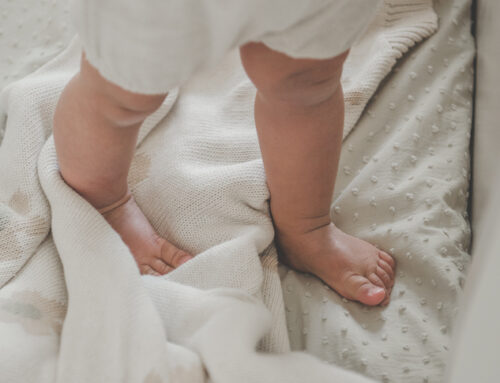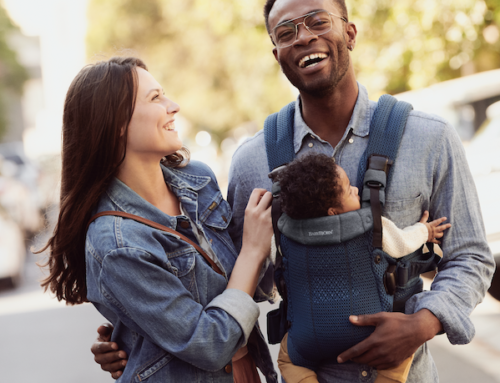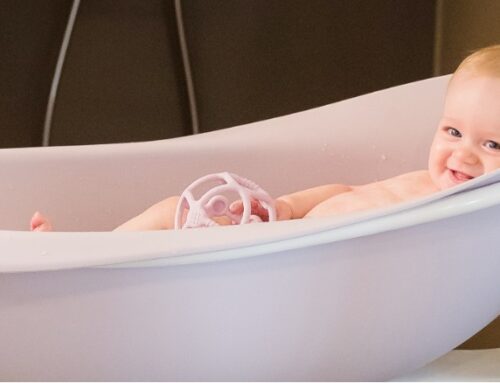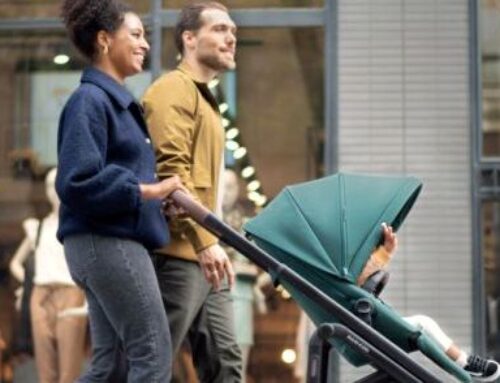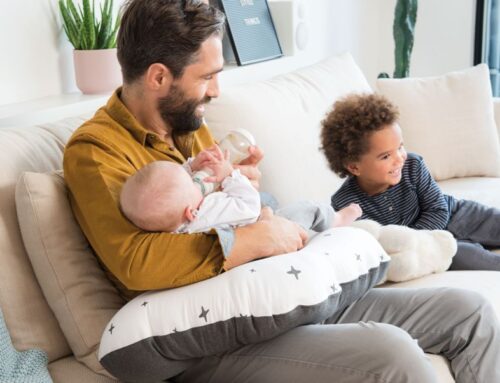Despite all the information available and good education, recent research shows that parents in The Netherlands do not always follow the advice on safe sleeping. How come? According to professionals, there are also worrying developments about the use of sleep products. A baby sleeps most of the day. A comfortable and safe place to sleep is, therefore, essential.
Guidelines for safe sleeping
For a safe sleeping environment, ‘Kraamzorg en Jeugdverpleegkundigen’ (Maternity Care and Paediatric Nurses) use the ‘VeiligheidNL’ guidelines. Together with the midwives, these professionals come into direct contact with parents who have just had a baby. Among other things, parents are given a leaflet with sleep advice and can find advice and information videos online. It is essential that professionals’ knowledge about sleeping safely is up to date so that they can answer parents’ questions. To this end, VeiligheidNL has developed an accredited e-learning module.
Prevention methods for baby safe sleeping
Even though many parents are afraid of cot death or Sudden Infant Death Syndrome (SIDS), they do not always follow the safe sleeping advice. In short, the advice is to let the child sleep on its back, in its empty bed and in a sleeping bag. Why do parents not always follow this advice? VeiligheidNL conducted research into this. Research shows that there are two different types of psychological resistance. Sometimes parents resist the message (scepticism), and sometimes there is resistance to change (inertia).
Parental behaviour change
Professionals in the form of maternity care, baby consultants and Youth Health Care (JGZ) play a significant role in changing parents’ behaviour. Mieke Cotterink of VeiligheidNL said: ‘Before you can break through inertia, it is important first to remove any scepticism. Only when parents are willing to exhibit the desired behaviour can they actually do it.’ According to Cotterink, this can be done by discussing behaviour, honestly stating all the pros and cons and looking for a safe solution together. For example, think of taking the baby into the parental bed if it does not stop crying. In this case, a cosleeper bed is a good alternative.
Resistance to change
And as for resistance to change, ensure no change is needed. Cotterink on this: ‘If you formulate in concrete terms what the right behaviour should be and how it should be carried out, parents do not have to think about it themselves. This prevents parents from misinterpreting your advice or not following it because they don’t know how.’
What are the advices for safe sleeping?
Put your baby on its back to sleep
When a baby lies on its stomach, there is a risk that it can become short of breath because its mouth and nose are pressed against the mattress. There is also a chance that a baby in the prone position will repeatedly breathe in the air they breathe out; this is called rebreathing. As a result, your baby is not breathing enough oxygen. A baby on the stomach can easily move around and accidentally lie on pillow-like materials. A side position is not recommended because a baby can roll over on its stomach.
Use safe bedding for your baby
It is not recommended to use a duvet, pillow or head protection. Large cuddly toys do not belong in baby beds either. A baby can lie against it and get into breathing difficulties. Safe bedding is also essential. A duvet is not recommended until a child is two years old.
Use a baby sleeping bag
A baby sleeping bag is the safest option as soon as the baby starts to move; that is when it rolls around in bed.
Making up baby’s cot in a short and tight way
For a safe sleeping environment, making up the cot in a short and tight way is important in the first period. The child’s feet almost touch the footboard. The bedding extends to the shoulders so the head lies free. First, a flannel is placed around the mattress, then a bottom sheet. Parents do not need to use a tarpaulin or waterproof flannel. If they wish to do so, the child’s head must never rest on it. Everything must be nice and taut for safe sleeping. Then the bed is further made up with a top sheet and a blanket of cotton, wool or synthetic material. A blanket may also be tucked into a duvet cover, but everything must be tucked in at the sides. Bedding that is too large should not be double-folded but folded under the mattress.
Prevent heat congestion
Parents should ensure good ventilation in the bedroom, and a baby should not get too hot through too many layers of sheets and blankets (TOG values). Heat congestion means a baby cannot give off its heat, a risk-increasing factor for cot death. With heat congestion, the blood vessels in the baby’s skin open wide to cool off. This means the blood pressure drops, and the heart has to pump too hard. A baby regulates its warmth through its head, which is why a cap is no longer needed after the first few days. The baby’s temperature should be checked via the neck, not the head. The ideal temperature for the baby’s room is between 16 and 18 degrees.
Do not sleep with your baby
Sleeping together with the baby in the parents’ bed is not recommended. This is not without risk: a child can end up under the duvet or between the mattresses, fall out of bed or lie against the pillows with the risk of gasping for breath. There is also a chance that a parent may roll over on the baby, especially if they are tired, smoke or are taking medication. A cosleeper is a good alternative.
Research shows: sleeping together is not essential for bonding
There is a lot of discussion about whether sleeping with your baby in the same bed is sensible or not. Studies show that sleeping together has no positive or negative effects on bonding. In other words, it does not matter whether parents sleep in the same bed with their baby or not. For this study, led by Dr Ayten Bilgin of the University of Kent, 178 mothers and their babies were followed at measurement points of 3, 6 and 18 months of age. Source: Journal of Developmental & Behavioral Pediatrics
No smoking
Smoking has been shown to increase risk. The advice is not to smoke before, during and after childbirth. Parents should also try to prevent their babies from breathing in other people’s smoke
Breastfeeding
It is possible that breastfeeding reduces the risk of cot death. There is evidence that breastfeeding has a protective effect and that a baby is more alert. It has not been proven that bottle-feeding increases the risk.
Use a pacifier
A dummy protects against cot death, so parents may give their baby a dummy if breastfeeding goes smoothly. Babies who are given a dummy sleep more peacefully and are less likely to turn over on their stomachs.
Ensure rest and regularity
If a child gets out of its rhythm due to long car journeys, for example, or a restless home situation, there is a chance that children will fall into a profound sleep. So ensuring regularity in the periods when the baby is awake and asleep is essential.
Concerns about sleep products and the internet
Innovative products regularly appear on the market. However, Cotterink is sometimes concerned that parents are not always adequately informed about this. New parents buy products and are later told by maternity care staff that they should not be used in certain situations. The industry and especially newcomers, must know what the safety requirements are. At the same time, healthcare professionals must be aware of new items.’ Another concern is the supply of sleep products that comes into our living rooms through foreign Internet providers. ‘An approval in a certain country does not say it meets our European safety requirements.’
How to deal with the baby nests hype
Sweet, soft and hype: baby nests! A baby nest is a kind of mattress or basket with a thin base and raised edges in which the baby can be placed for a short while to rest or play. The raised edges or bumpers are usually made of a cushion-like material, which is precisely where the problem lies. Because children can lie face down against the edges, often filled with thick, synthetic materials. The cords used to tighten a baby’s nest at the bottom can also be a problem if they are too long or cannot be tucked away in a compartment or behind a piece of fabric. More and more often, baby nests are being used as a proper place to sleep, whether in the stroller, playpen or parental bed, and experts are not happy about this, to say the least. Unfortunately, no standards have been developed (yet) for these products.
If parents do purchase a baby nest, the following advice applies:
- Always place the baby’s nest on a flat surface.
- Place the baby on his back with his feet near the opening.
- Always supervise the baby.
- Only put the baby in there to play or as a short resting place; if the baby wants to sleep, put it in the cot.
- Never use a baby nest as a sleeping place, and definitely do not put your baby in it when it has to sleep at night.
- Do not use a baby nest once your child can roll over.
- A baby nest is not a means of transportation, so take the baby out when you move the baby nest.
Sources: www.veiligheid.nl/veiligslapen. ‘Veilig slapen voorlichting aan ouders, een gedragswetenschappelijke benadering’ [Safe Sleep Education for Parents, a Behavioural Approach]. Authors: M. Cotterink, researcher, SafetyNL; Dr. L.A. Venhoeven, behavioural psychologist, D&B Behaviour
BabyWereld BabyWiki



